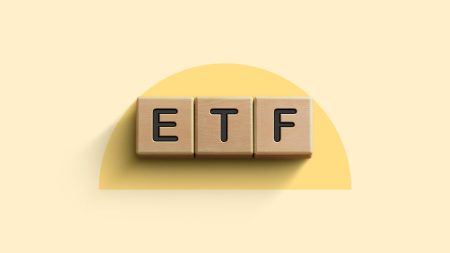Stocks, bonds and mutual funds are among the most popular investments in the world for all kinds of investors, from the individual to the institutional. But you may have heard the terms before without knowing exactly what each means and the differences between them.
Most people are familiar with savings accounts at banks, but in order to save for retirement and other financial goals, it’s important to understand how stocks, bonds and mutual funds differ.
Here’s a guide to the basics and which ones might make sense for your portfolio.
Stocks, bonds and mutual funds: How they compare
| What they are | Fees | Income | Risks | Where to buy | |
| Stocks | Ownership stakes in a company | Trading commissions, but often free to trade | Potential dividends | Stocks can be quite volatile and should only be part of a long-term investment plan. | Brokers |
| Bonds | Loans to companies, governments or municipalities | Trading commissions | Interest payments | Bonds are typically less volatile than stocks, but there can still be credit risks, inflation risks and interest rate risks. | Brokers or through TreasuryDirect |
| Mutual funds | Pooled money from multiple investors to purchase a portfolio of assets such as stocks or bonds | Varies depending on fund, but can range from 0 to about 1 percent | Dividends or interest payments depending on the assets in the fund | The risks of mutual funds depend on the underlying assets that are held within the fund. | Brokers or directly from the fund company |
Stocks
Also called equities, stocks are the cornerstone to most retirement accounts because they typically generate higher returns than many other investments. A diversified collection of large stocks such as the S&P 500 index has clipped along at about 10 percent a year over the long term.
That said, stocks come in many different flavors. They represent all industries, with some based in the U.S. and others overseas. Stocks also come in all sizes: There are large-cap, mid-cap and small-cap stocks. The term “cap” is short for “market capitalization,” which is computed by multiplying share price by the number of a company’s outstanding shares.
What does that mean?
“Large-cap stocks tend to be companies that are more established,” says Brett Horowitz, a wealth manager at Evensky & Katz/Foldes Financial Wealth Management. “Small companies tend to have more risk, and the extra risk you’re taking on leads to higher returns,” Horowitz adds.
According to Ibbotson Associates, small caps have grown by an average of about 12 percent annually over the long term. The almost 2 percentage point annual lead over large caps compensated investors for the extra risk they’d assumed. Of course, there’s no guarantee the trend will continue.
More recently, small-cap stocks have lagged the returns of large-cap companies, with the largest companies such as Nvidia, Microsoft and Apple producing massive returns for shareholders.
Bonds
When you buy a bond, you’re essentially becoming a lender, since bonds are really nothing more than an IOU that’s been issued by a government or corporation.
In general, bonds are considered safer investments than stocks. But that’s not always true. It depends on the bond you buy. The riskier the bond — that is, the lower a borrower’s credit quality or “rating” — the higher the interest rate and the more you stand to gain (unless, of course, the borrower defaults). Firms such as Standard & Poor’s and Moody’s are among agencies that determine whether bonds are “junk” status, meaning they carry high risk, or “investment grade,” meaning they carry little to moderate risk.
U.S. government bonds are guaranteed by the full faith and credit of the federal government, so they’re considered the safest around. They mature — or come due — in various time periods. Treasury bills generally mature in three months, while Treasury notes typically mature within a year. Treasury bonds mature over longer time frames, usually between five and 30 years. With interest rates still relatively low, bonds aren’t likely to generate the returns most people need to retire in their early 60s.
Local and state governments also issue bonds. Not all are guaranteed, but they’re considered relatively safe investments, depending on a government’s creditworthiness. That said, municipal bonds have a distinct advantage: Income is generally exempt from federal taxes and sometimes free from state taxes, too.
Mutual funds
Think of these as baskets that may contain bonds, stocks and cash equivalents. With thousands to choose from, mutual funds come in a variety of styles. They may hold a single type of asset, such as only domestic large-cap stocks, or a blend of investments, such as a balanced fund with a mix of stocks and bonds.
Some funds are more risky, others less so, depending on what they’re invested in. Index funds are geared to mimic certain indexes (such as the Standard & Poor’s 500) and they tend to be more tax-efficient and less costly than, say, actively managed funds, which also may have sales charges and other expenses.
Mutual funds enable investors to buy a multitude of assets relatively cheaply. Instead of spending $1,000 for shares of a single company, you could spend the same amount on a fund that holds the same company plus many others. That’s a cheap way to diversify your assets and protect yourself from the concentration risk of holding a single stock.
If you don’t have the time or expertise to monitor various investments, then putting money into a mutual fund can be a safer, more practical way to invest.
Stocks vs. bonds vs. mutual funds: Which is the best investment for you?
Determining which of these options is best for you will depend on your time horizon and risk tolerance. Stocks, either individually or through mutual funds, are best for long-term goals that are at least five or more years down the road. This long-term view is necessary because of the additional risks associated with owning stocks. If you suffer a short-term decline, there’s still time to recover before you reach your goal.
Bonds are often best for short-term goals or for investors who are particularly risk averse. Owning bonds or other fixed-income securities can help you save for near-term goals like a down payment on a house or a car or generating income during retirement. You won’t earn the same return that’s possible with stocks, but you’ll be more confident the money will be there when you need it.
Mutual funds, which may own stocks, bonds, cash or a combination of securities, are a great way for investors to build diversified portfolios at a low cost. Some investors may enjoy building a portfolio one stock at a time, but for most people, owning a mutual fund or a top exchange-traded fund (ETF) is an approach that usually makes the most sense.
Building a portfolio is like putting together a salad where you choose the amount of each ingredient that best suits your taste. Mutual funds — a pre-mixed blend of assets — provide a great base to build on. Sprinkle on some individual stocks for extra zest or tone it down with a helping of bonds. When you toss these ingredients together in proportions that match your investment goals, you end up with a portfolio that provides the perfect blend of growth, diversity and stability.
— Dayana Yochim, Bankrate investing writer
Editorial Disclaimer: All investors are advised to conduct their own independent research into investment strategies before making an investment decision. In addition, investors are advised that past investment product performance is no guarantee of future price appreciation.
Why we ask for feedback
Your feedback helps us improve our content and services. It takes less than a minute to
complete.
Your responses are anonymous and will only be used for improving our website.
Help us improve our content
Read the full article here









